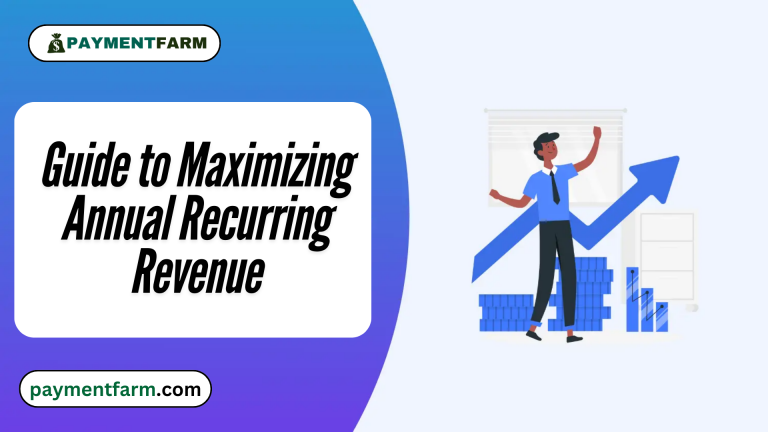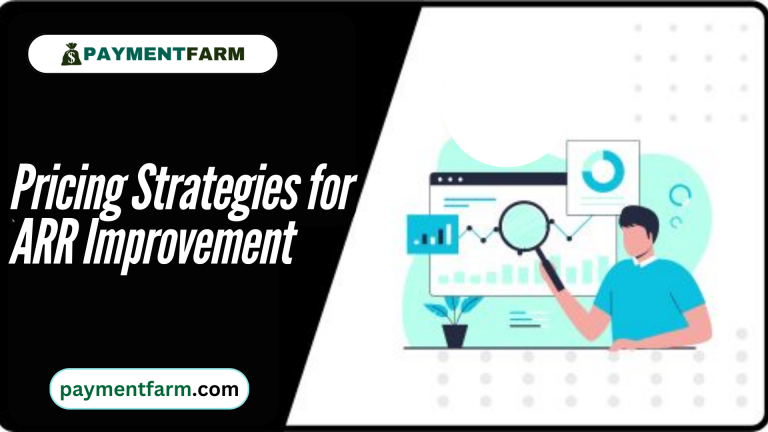In the fast-changing environment of subscription-based businesses, the Maximizing Annual Annual Recurring Revenue becomes the most important metric. Arr ensures stable revenue growth while emphasizing the long-term sustainability of businesses. This guide discusses growth through revenue, pricing strategies, ARR, and other relevant methods for survival in competitive markets.

Understanding ARR and Its Significance
ARR is the anticipated revenue to be derived via recurring subscriptions within a calendar year. The figure can now serve as a guideline for forecasting financially and strategy planning. Its application by firms can include,
- Accurate forecasting of any kind of recurring revenue streams.
- Understanding growth prospects.
- Establish trust with investors having more valid metrics
Successful revenue Growth Strategies
- Subscription Revenue Strategies: Offer various options to increase the appeal for as wide a client base as possible. Such as, tiered pricing or bundled services to appeal to different types of customers.
- Recurring Revenue Optimization Software: Utilize the functions to standardize and quantify subscription processes. Such software provides subscription analytics insights for better-informed decisions.
- Upselling for Subscription Businesses: Upsell users on higher-tier plans based on value added like premium features or benefits.
Pricing Strategies for ARR Improvement

- Optimization of Subscription Pricing: The right pricing model must be adopted to optimize ARR. Some of them include the following:
- Value-Based Pricing: Price your product according to the perceived value from customers rather than cost.
- Dynamic Pricing: Prices vary based on market demand, competitor pricing, or user behavior.
- Subscription Billing Optimization: The best billing system has minimum revenue leakage and timely payment. Make use of automatic payment tools and strong recurring billing software for smooth process flow.
Decrease in Customer Churn Rates
Churn is one of the significant parameters used to determine ARR. Some of the effective ways through which customer churn rates can be reduced are:
- Loyalty Programs for Retention: Reward loyal, long-time customers to develop a sense of loyalty for a brand.
- CRM for Customer Retention: Continue and improve the interaction with CRM.
- Engagement Strategies for Retention: Reach the customer through relevant content, new developments, or promotions in stock.
Tools to Manage Subscriptions
Thanks to advanced tools, it is simpler to work with subscribers and analytics. Here is the list of must-haves:
- Subscription Analytics Tools: Provide a general view of consumer behavior, revenue increase, and retention.
- Payment Gateways for Recurring Revenue: Hassle-free and secure payment processing.
- Reoccurring Payment Management: Auto-invoice and reminders will help to scale down the workload to an extent.*
European Markets ARR Growth
- Culture and Payment Preferences: Culture preferences exist in Europe as well, and companies must adapt to them to create a local solution and eventually win over Europe:
- Europe Payment Preferences: This covers region-specific payment options as well, such as SEPA direct debit.
- European Subscription Trends: Stay up-to-date with future trends to lead.
- Compliance and Regulations: Maintain Europe regulatory requirements of recurring revenue without entering the realm of legal trap. It comprises GDPR, PSD2, and others such as local mandatories.
Maximizing Annual Recurring Revenue Data in Maximizing ARR
The insight from subscription analytics should be utilized in identifying the high risk customers that will churn, growth forecast of revenue, and optimal pricing models.
Conclusion
Maximizing Annual Recurring Revenue will therefore require an approach that combines monetization strategies, efficient tools, and the best practices in customer retention. It is thus important that businesses adapt their strategies based on the needs of the customers they serve, to ensure that the technologies that facilitate operations are streamlined yet in line with local and international regulations. In addition, using data-driven decision-making and continuous iteration of strategies in subscription revenue will equip businesses with the agility to stay responsive in this competitive marketplace. Companies focusing on customer retention, reduction of churn, and refining the subscription model will lead the market in a fast-changing global business landscape. The path to achieving maximum ARR is not one process but a continuous learning process that requires adaptation and innovation. Business will achieve unprecedented growth if these principles are adopted to guarantee immediate success and sustainability over the long term.
FAQs
Annual Recurring Revenue, or ARR What’s Annual Recurring Revenue or ARR?
Maximizing Annual ARR is that amount of predictable and recurring annual revenue a company acquires through subscription. Often applied to businesses using a subscription model, one of the most important metrics of financial forecasting and strategic planning involves the use of ARR.
Why is ARR significant?
Annual Recurring Revenue enables firms to forecast their revenue growth opportunity and exploit areas of opportunities. It also fosters investor confidence as it gives a workable measure of how healthy they are.
How do I reduce churn rates?
Implement loyalty programs, CRM tools to monitor interactions with customers, personal engagement campaigns, and pro-actively engage customer pain points.
What are the best subscription management tools?
Basic tools include subscription analytics platforms, automated payment tools, recurring billing software, and secure payment gateways.
What are the differences in the European market preferences for subscription?
The customers in Europe would prefer local means of payment like SEPA direct debit. It is quite common for there to be other requirements from rules and regulations. This includes things like GDPR and PSD2. Cultural preferences is something that one needs to know about too.
How do data analytics affect ARR?
Data analytics produce customer-behavior insights. These, therefore, develop churn risks and help develop the pricing and subscription model toward better revenue outcomes.
